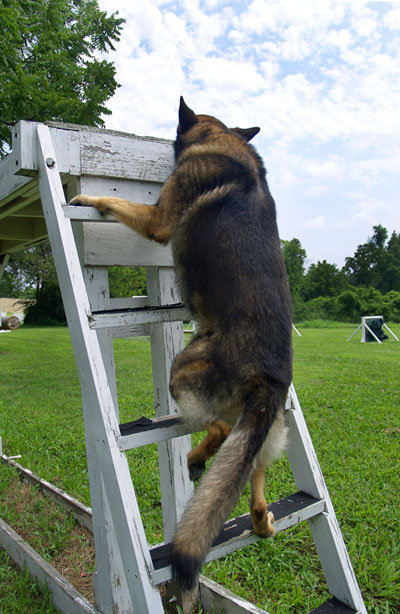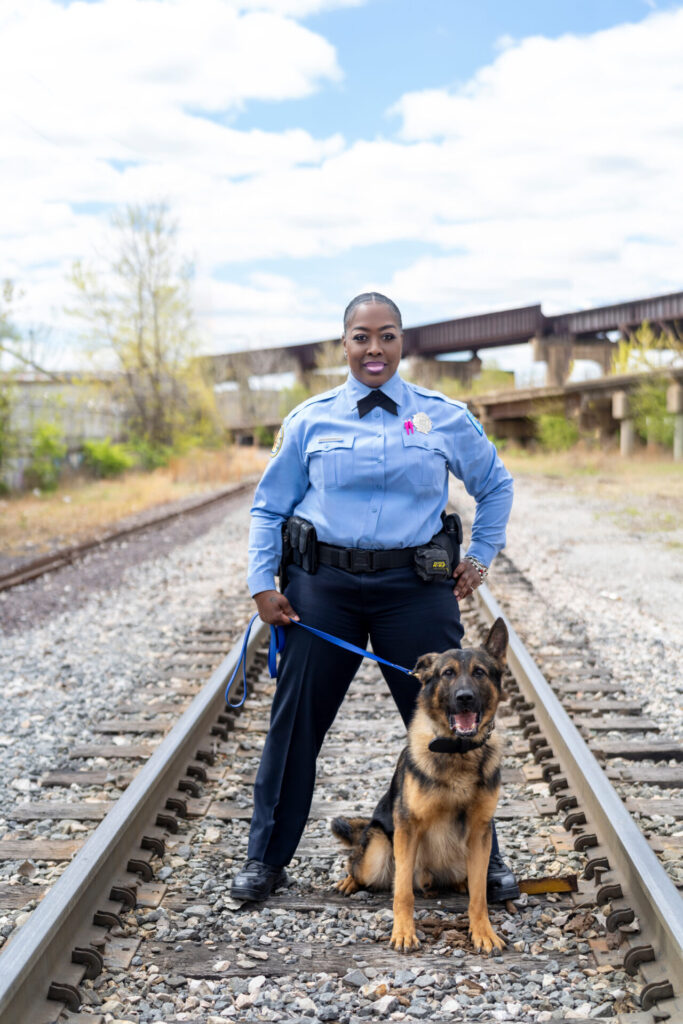
The Canine Unit is staffed by police officers who handle 8 canines. The canines are available on a 24-hour basis to assist with searching for evidence, tracking suspects, locating missing persons and seeking hidden explosives and narcotics.
In 1958, policing in St. Louis forever changed with the employment of police dogs. The use of dogs by the department began after the Board of Police Commissioners selected and sent five St. Louis Police Officers to London for the purpose of viewing that city’s canine program. The officers were impressed with what they saw and thought it was a great crime-fighting initiative to incorporate into the department’s policing strategy. After the officers returned from England, they petitioned the Board of Police Commissioners to start a canine program in St. Louis. The Board approved the officers’ request, and the St. Louis Police Canine Section was formed. Today, the department’s canine program is recognized as one of the best in the country. In 2023, the Canine Unit celebrated 65 years of dedicated service.
The Canine Unit selected the German Shepherd as the unit’s preferred dog because of its eagerness, fearlessness and self control. German Shepherds also possess various mental and physical attributes that makes them a perfect partner in the department’s fight against crime.
The canines and their handlers spend countless hours working together and training in order to become efficient partners. The canines and their handlers also receive ongoing training after they have become “partners” in order to provide the best possible service to the department. Canines play an important role in both solving and preventing crimes.
Interesting SLMPD Canine Facts:
- SLMPD Canines are imported from Europe. The SLMPD currently has dogs from France, Holland, Germany and the Czech Republic.
- The SLMPD currently has eight canines. Four are dual trained explosive detection canines and four are dual trained narcotic detection canines. Dual meaning that all SLMPD canines have a particular specialty of focus (narcotics or explosives) but all are trained in patrol work.
- The Canine Unit trains as a unit twice a month for several hours. Each handler also does individual training off-duty to keep their canine partners as sharp as possible.
- The current work life average of a department canine is approximately six years. Once a supervisor or handler notices a significant drop off in performance due to a canine’s age or health, they confer with the department veterinarian to see if the dog should continue working or retire.
- Once a canine is retired from the street, most remain with the handler as a pet.
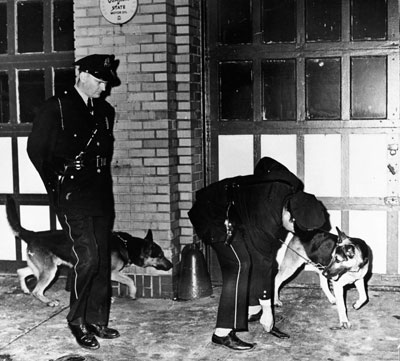
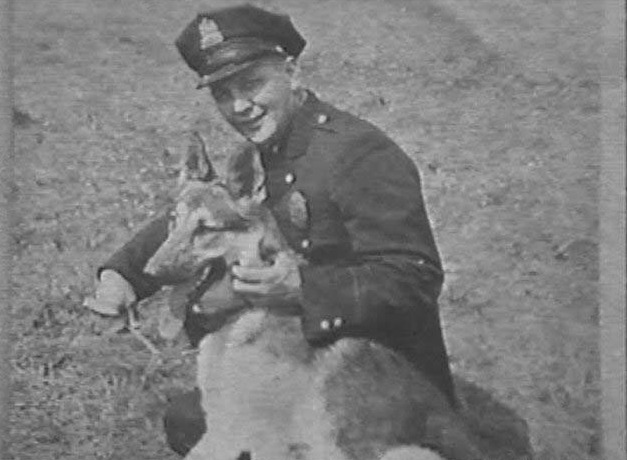
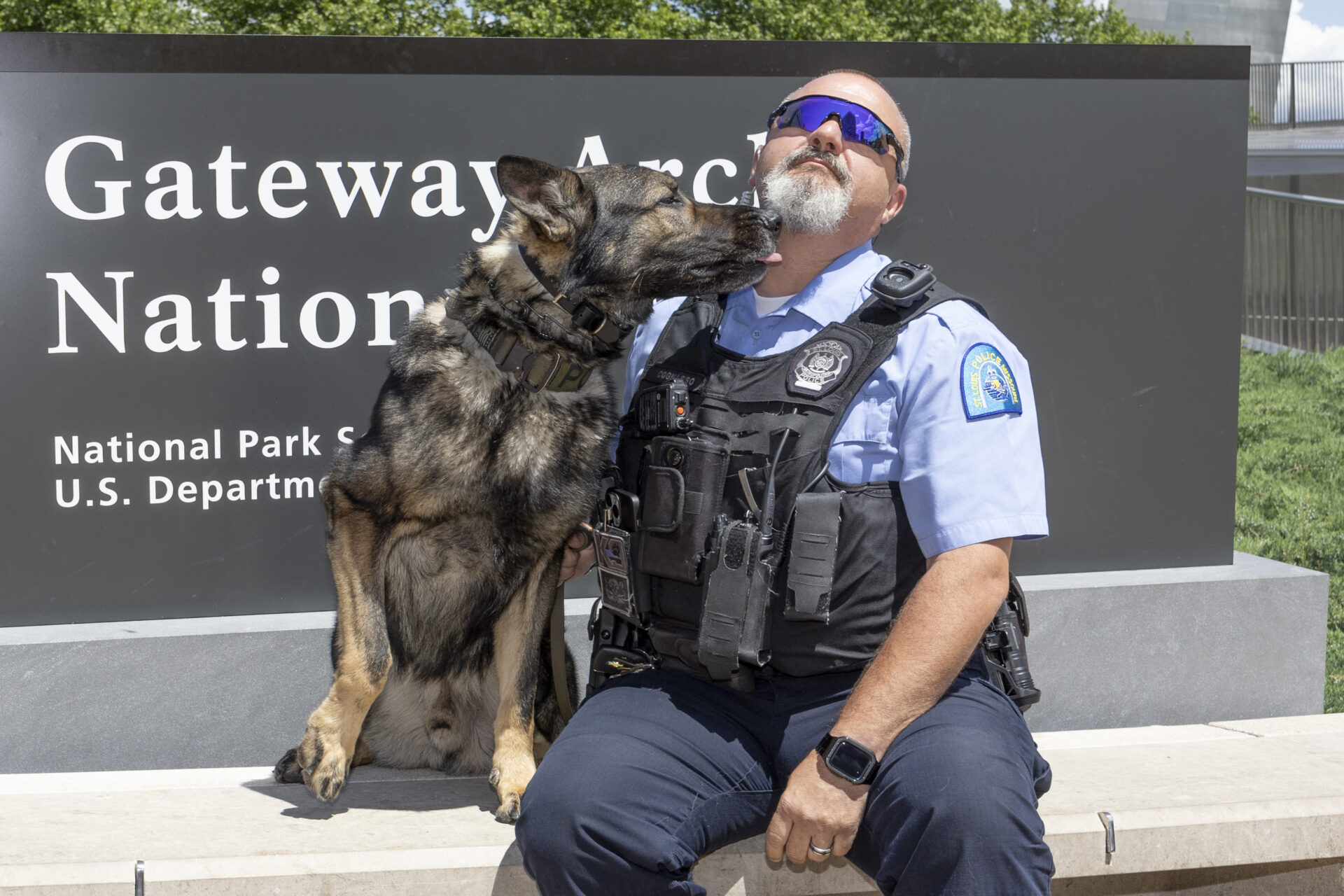
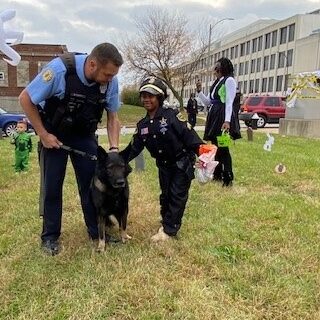
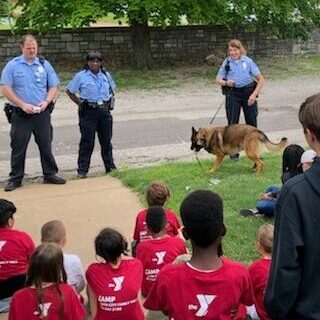
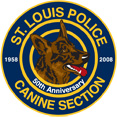
Canine Unit
If you are interested in having a Canine visit your community event, please contact the Community Outreach Unit at (314) 444-5419.
